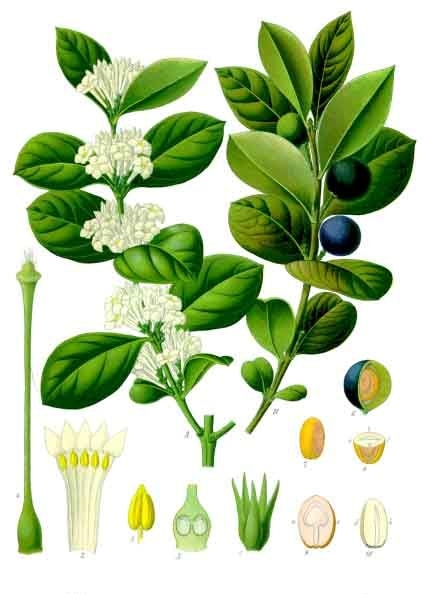Apocynaceae - acokanthera ouabaio poisson, arrow poison tree, Ouabaio-Baum
Evergreen shrub or tree, native to East Africa, 2-7m tall; leaves leathery, flowers wheel-shaped, white or soft pink, axillary, fruits violet.
http://en.wikipedia.org/wiki/Acokanthera_schimperi
Acokanthera schimperi is one of the medicinal plants used in Ethiopia for treatment of various skin disorders. [Antiviral activities of some Ethiopian medicinal plants used for the treatment of dermatological disorders. Gebre-Mariam T, Neubert R, Schmidt PC, Wutzler P, Schmidtke M. J Ethnopharmacol. 2006 Mar 8;104(1-2):182-7]
The extract of the wood (and also the roots) of Acokanthera schimperi with boiling water (until thickness) is known as the classic hunting poison of East Africa. Many murder cases with this arrow poison are known, especially in Kenia, even in the last decades. Not only ingestion but also absorption through the skin may be seriously toxic to humans. The wood of the Arrow Poison Tree is now a major commercial source of ouabain, which is the main alkaloid. Ouabain shows digitalis-like activity and was first isolated from the roots of the tree by Arnaud in 1882. All parts of Acokanthera schimperi, excluding the ripe fruits, are quite toxic. Although the seeds are not used to make the arrow poison, they contain much more of the toxic alkaloids ouabain and acovenoside A than wood or roots. [Afrikanische Arzneipflanzen und Jagdgifte. Chemie, Pharmakologie, Toxikologie ; ein Handbuch für Pharmazeuten, Mediziner, Chemiker und Biologen. Neuwinger, Hans Dieter, Stuttgart, 1994]
Uses. Ouabain, which is identical to G-strophantin from the seeds of Strophanthus gratus, is used to treat cardiac insufficiency.
